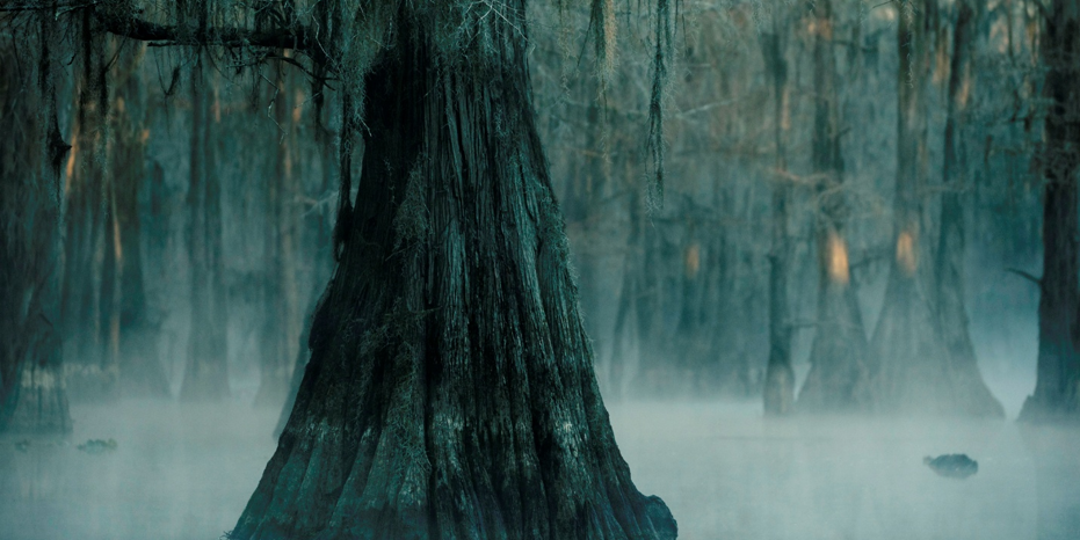For much of the United States, trees are the defining backdrop that sets the stage for the spooky tales and fall festivities that are beloved and celebrated in the autumn season. Amid rustling fallen leaves, with their bare branches stretching into moonlit skies and coldly clattering in the autumn winds, trees in the fall can bring on an eerie sense of unease, conjuring recollections of ghost stories, local superstitions, and seasonal haunted folklore.
America’s forests and landscapes are home to countless remarkable trees that dramatically illustrate a fall landscape – but a select few are especially unusual, distinguished by their unsettling visages and ghostly reputations. From dry deserts to misty swamps, there are arboreal oddities found in every region of the US that can be described as no less than being truly weird – captivating human imagination, inspiring stories, and inviting scientific inquiry.
In this article, we’ll explore ten of the most unusual trees that contribute to America’s rich tapestry of natural wonders and haunted folklore. From thorny trunks and disfigured branches to dangerous toxins, we’ll take a look at the unusual forms and unique adaptations that make these trees strangely unique - inspiring local legends, spooky mysteries, and ghostly tales.
1. Joshua Tree
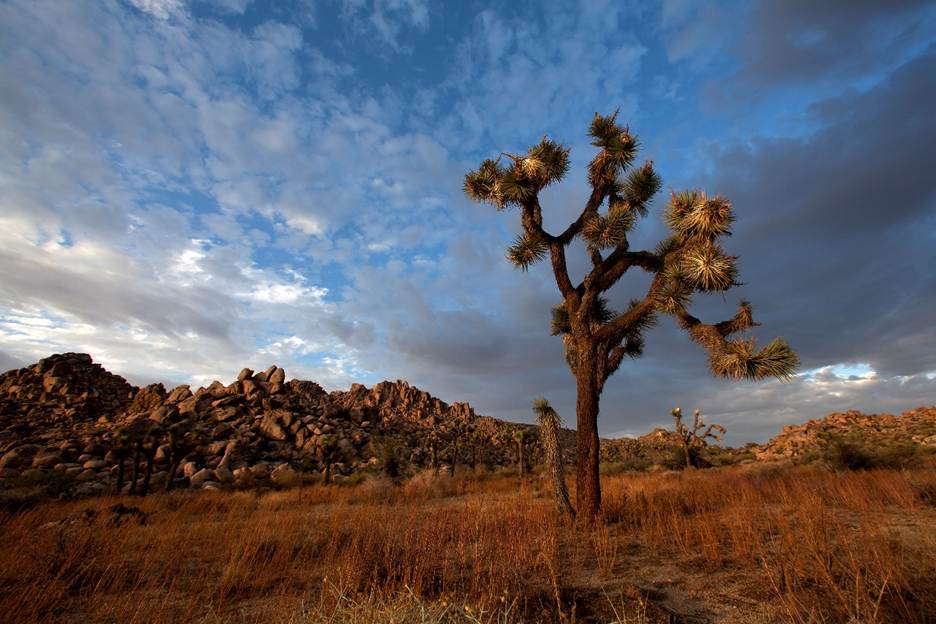
The Joshua Tree is a native tree endemic to the California Mojave and Sonoran Deserts and portions of the surrounding Great Basin region of the American Southwest. Closely related to the yucca plant, Joshua trees are especially notable for their dense shaggy clusters of long lance shaped leaves that are bunched at the ends of their irregularly bent and contorted branches.
Joshua trees reportedly were named by Mormon pioneers who likened the trees’ angular, upward reaching limbs to the outstretched arms of the biblical prophet Joshua. These bizarre trees are often associated with strange tales of UFO's, flying saucers, and haunted ghost stories that color the folklore of the Southwestern high desert. There are two recognized Joshua tree species - Yucca brevifolia and Yucca jaegeriana - which are defined by their differences in size and geographically differentiated growing regions.
2. Bald cypress
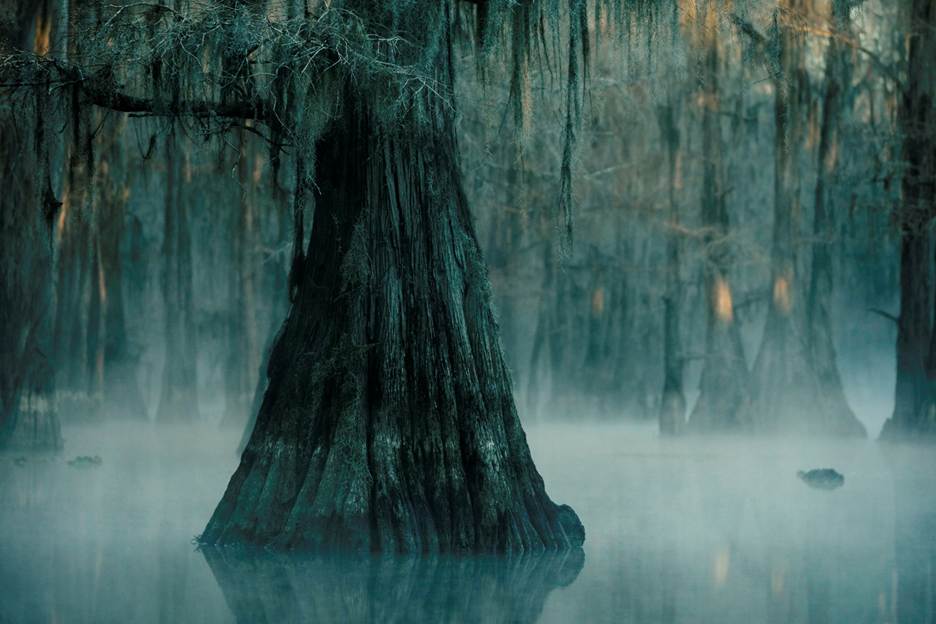
The bald cypress, Taxodium distichum, is an ancient deciduous conifer that is indigenous to the dark and murky swamps and rivers of the Southeastern coastal plains of the United States. The bald cypress is known as the oldest wetland tree species in the world.
The oldest living bald cypress tree is 2,624 years old. Located in the Black River swampland of eastern North Carolina, this is the oldest living tree in eastern North America.
Being deciduous, bald cypress trees lose their needles in the fall, and their bare silhouettes cast eerie shadows on the dark swampy waters that surround them. But what makes these trees especially scary are their knobby woody structures – technically known as pneumataphores - that mysteriously protrude from the water’s surface. Commonly called cypress knees, these spooky structures conjure a creepy likeness to gnarled knuckles and bony human appendages – but their real purpose is to help oxygenate the tree’s roots that stabilize the bald cypress tree in the soft, muddy riverbeds and swampy wetland bottoms of its habitat.
3. Devil’s walking stick
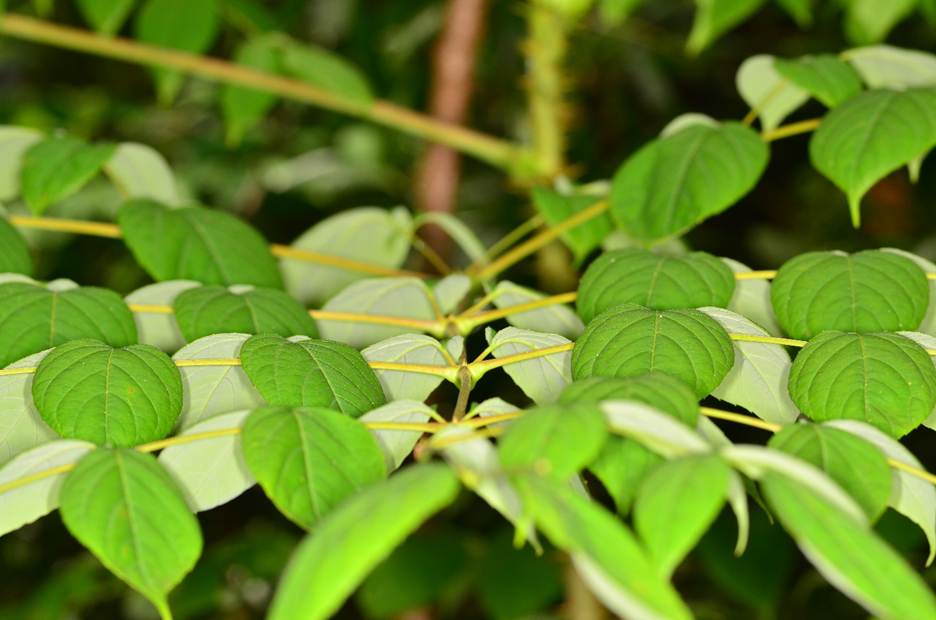
Native to the woodland areas of the American Mid-Atlantic region, Aralia spinosa, or Devil’s walking stick, is a small, graceful tree that is notable in the summer for its horizontal tiers of intricate compound foliage, topped with white billowy flower sprays that change into attractive clusters of black fruit.
However, in the colder months when the tree’s outer stems and leaves fall away, a darker side is revealed. True to its name, the tree’s central stem resembles a club shaped walking stick adorned with leaf scars shaped like half-moon crescents and ringed with crownlike circles of sharp thorns – ghoulish decorations making it duly suited to a spooky and menacing character, if not the Devil himself.
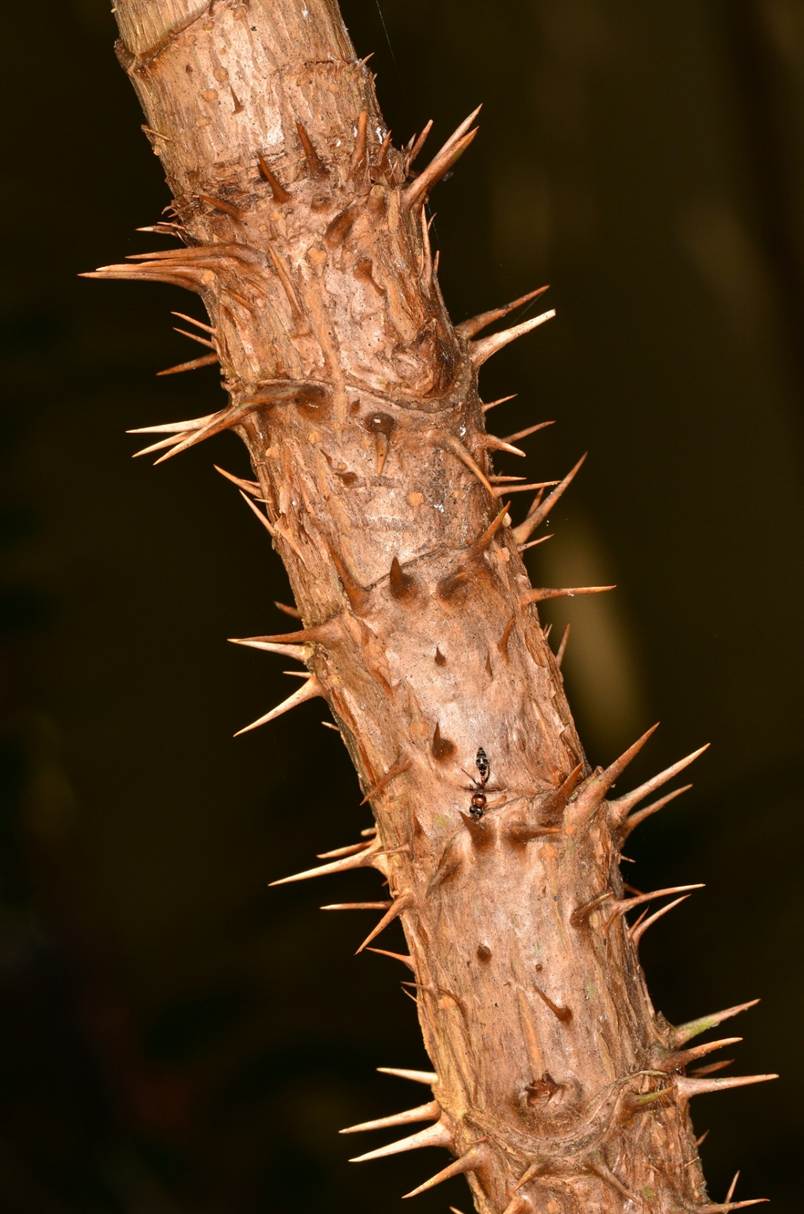
Sharp rings of thorns and crescent shapes adorn the Devil’s walking stick.
4. Sandbox tree
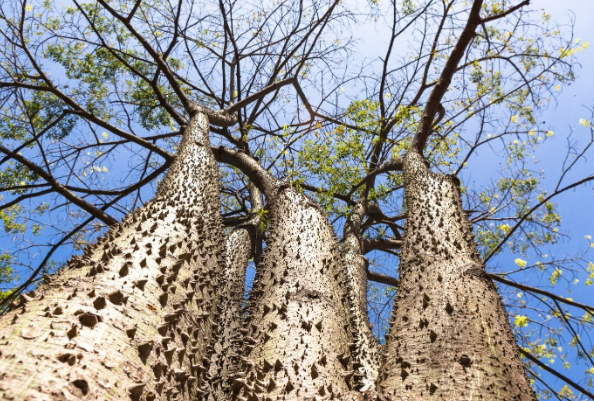
This truly weird and bizarre tree is native to the tropical regions of Florida. The sandbox tree - aka Hura crepitans - grows to a towering height of 130 feet, with the entire span of its bark encrusted with sharp and scary cone-shaped spikes. The sap of this tree is neurotoxic and was used by indigenous people to make poison darts for the purposes of hunting and fishing. If that isn’t weird enough, this tree also produces a small pumpkin shaped seedpod that after ripening becomes a ticking time bomb - forcefully exploding and projecting shrapnel like seeds flying at speeds of 170 mph.
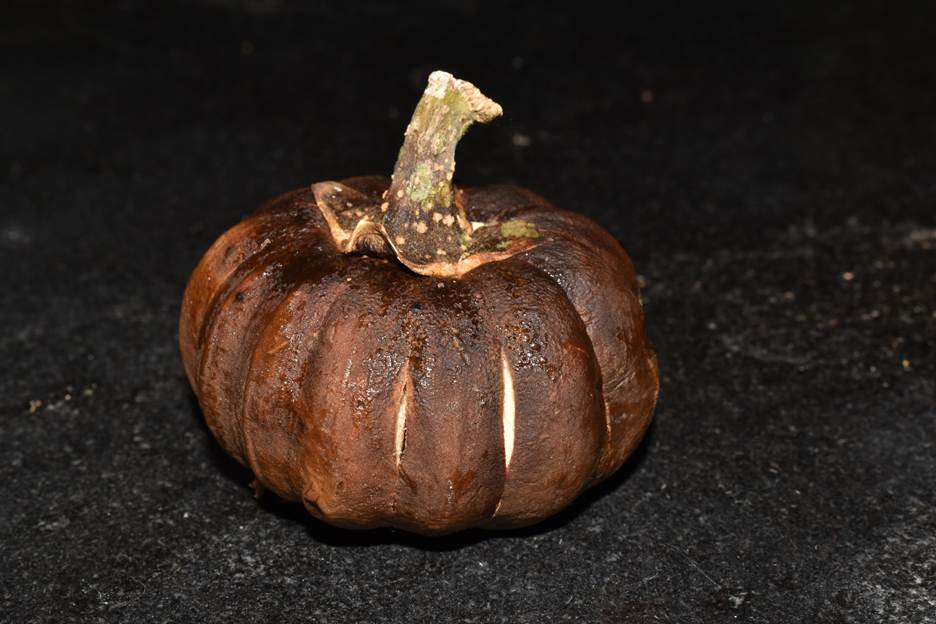
Beware of the pumpkin shaped seedpod of the sandbox tree!
5. Manchineel tree
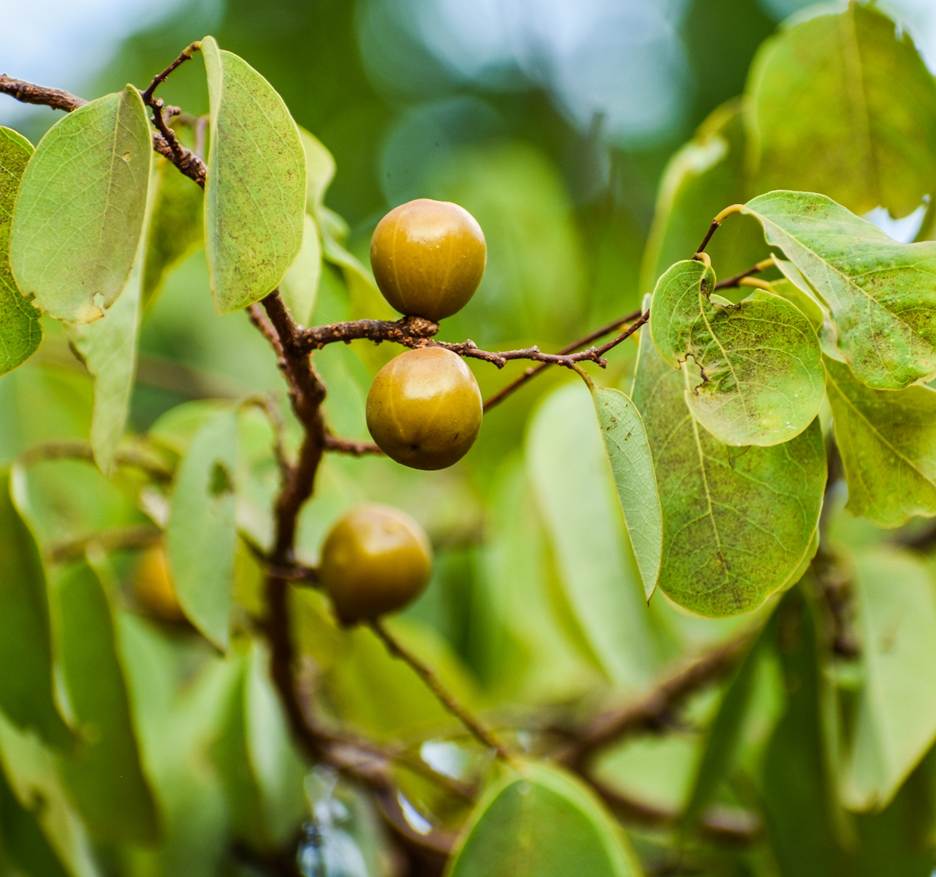
There's yet another tree, the Manchineel - Hippomane mancinella - or Death Apple, that also grows in the southernmost coastal areas of Florida. It is literally known as the world's most dangerous tree, according to the Guinness Book of World Records.
Just standing under a manchineel can cause severe burns and blisters - or cause blindness - if any sap infused water droplets fall from the leaves and branches onto your skin or into your eyes. This tree is also infamous for its round fruit that, while reportedly tasting sweet, can send you to the hospital - unless it kills you first.
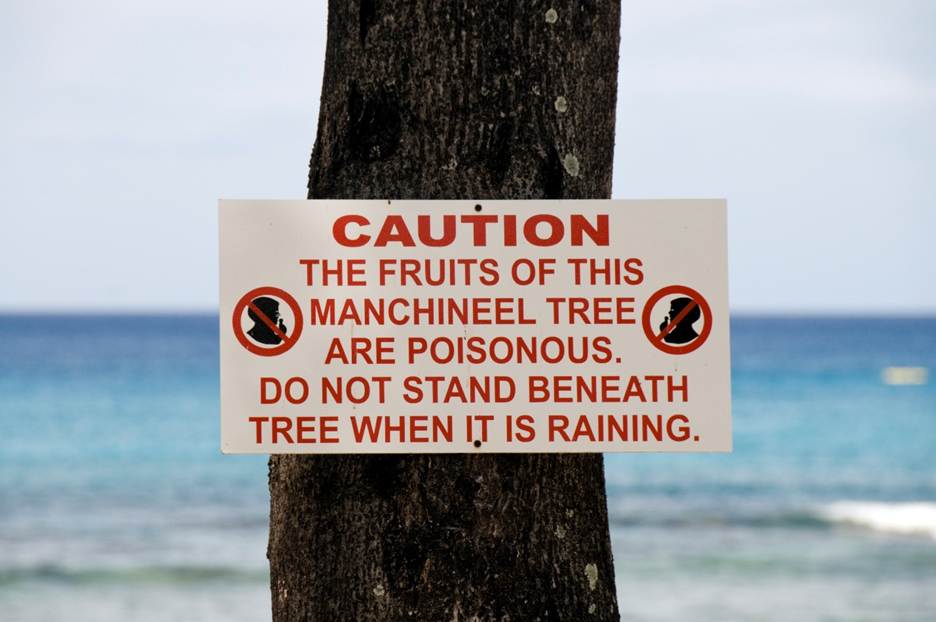
Stay away from the manchineel tree!
6. Bristle cone pine

An iconic sentinel in the arid and windy areas of the Western mountains in the Great Basin, the bristlecone pine - Pinus longaeva - is a hauntingly eerie sight to behold. Individual living trees are some of the oldest in the world, with some specimens dating back as far as 4,800 years. The gnarled, bent, and twisted figures of these ancient trees silently bear witness to centuries of punishing exposure to the high winds and extreme elements of the desolate high Western elevations.
7. Southern Live Oak
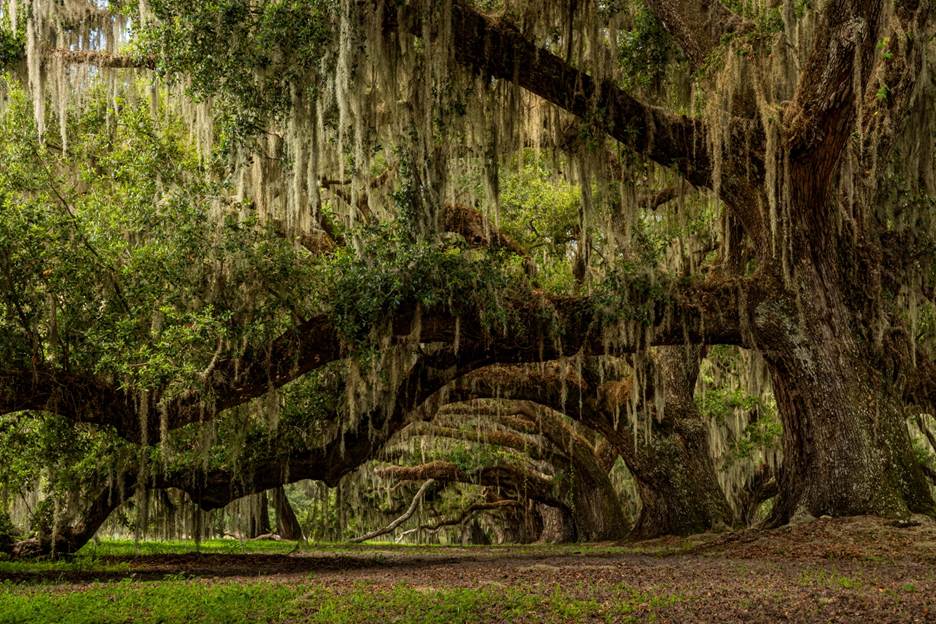
The Southern live oaks – Quercus virginiana - are iconic trees of the Southern Gulf Coast and other coastal regions of the Southeastern United States. Their massive, sprawling arm-like branches, eerily draped in Spanish moss, make them an especially spooky backdrop for many Confederate ghost stories and other haunted tales told in Southern historic coastal towns and cities.
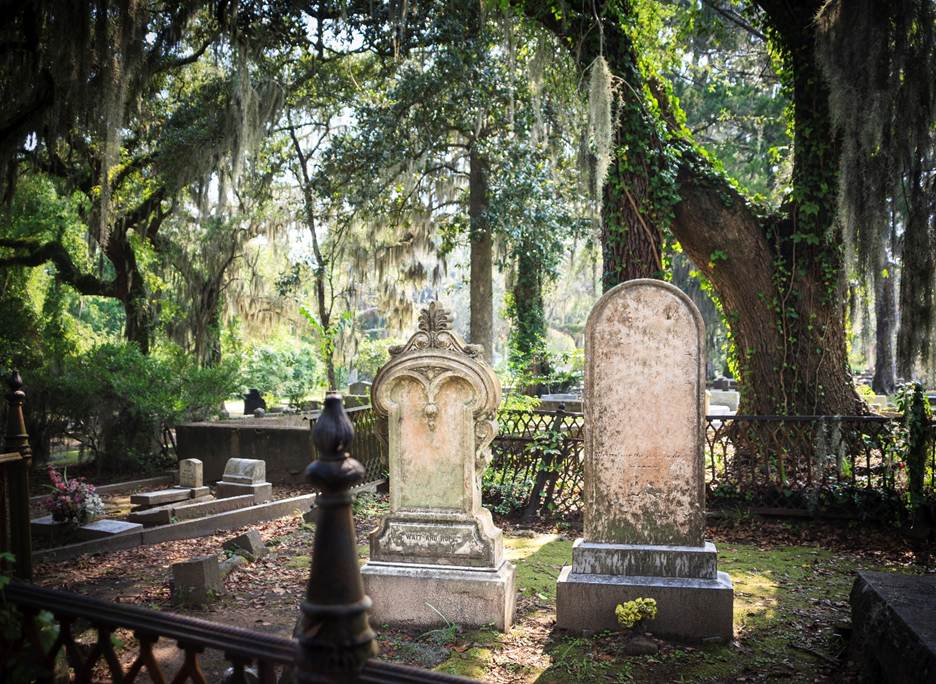
Southern live oaks lend a classic - and spooky - ambience to an old historic Southern cemetery.
8. Honey locust
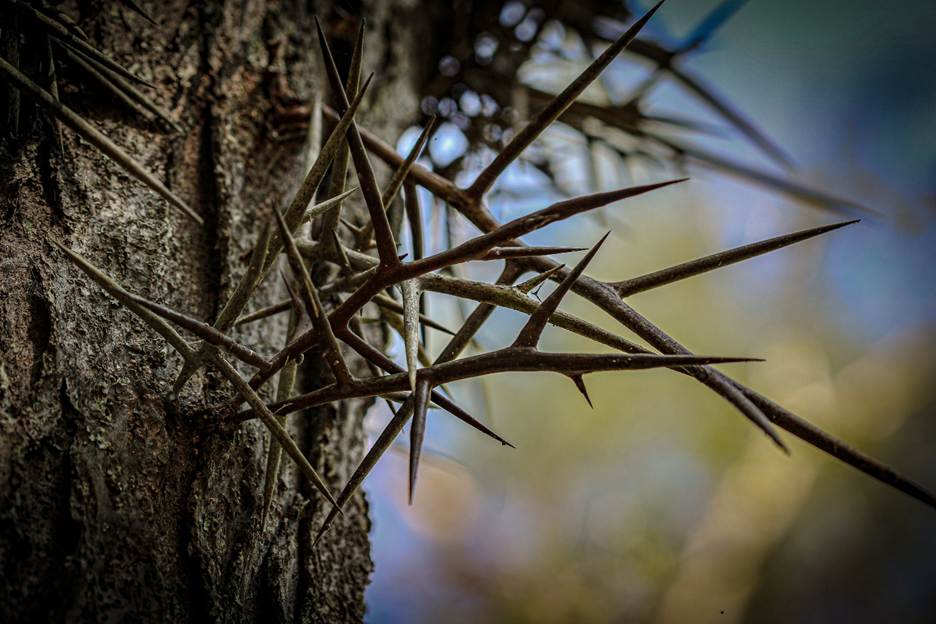
The specific epithet of the scientific name for the honey locust tree - Gleditsia triacanthos – translates from Greek and means “three thorns”. From its central trunk to its highest canopy branches, this ancient North American species is a scary sight in its natural habitat - heavily armed with clusters of viciously long and sharp multi-barbed thorns. Growing in length to a foot or more, these thorns are believed to have evolved to protect this tree ages ago in the Pleistocene era, deterring giant mastodons and other prehistoric megafauna that may have attempted to graze on its leaves and branches.
Fortunately, in modern times thornless cultivars of this beautiful native tree - Gleditsia triacanthos var. inermis – are now available and relatively harmless for planting in residential landscapes.
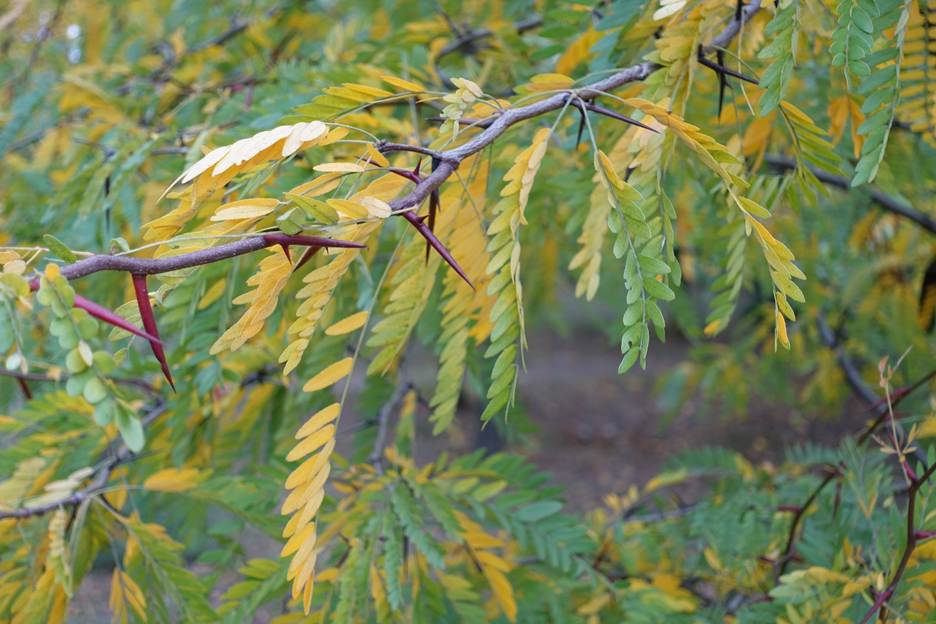
Beware of the thorns of the honey locust tree.
9. Black walnut
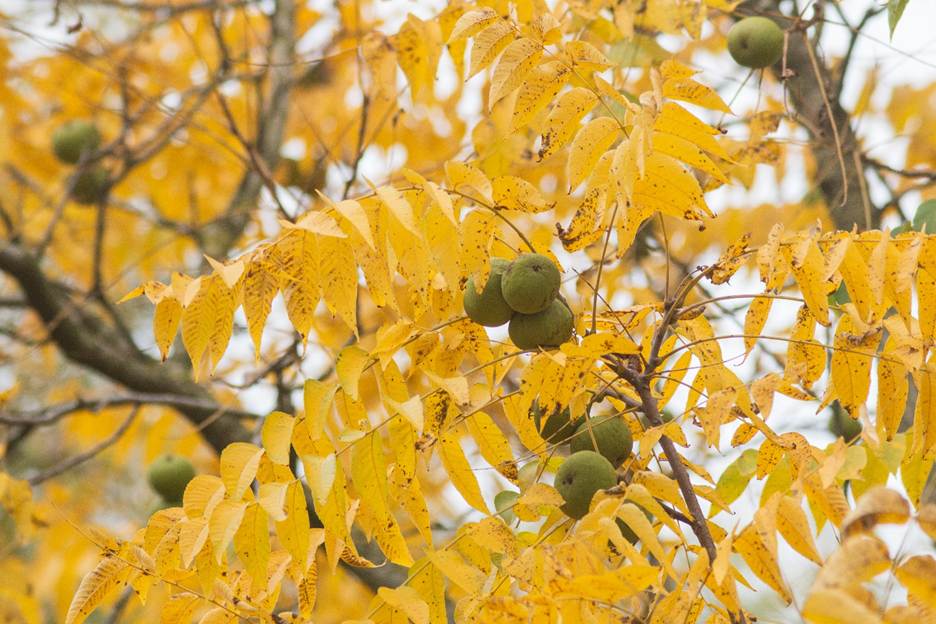
The black walnut – or Juglans nigra – is a well-known North American hardwood tree that grows primarily in the eastern United States from Vermont to the Southeast. This tree loses its leaves early in the fall, leaving behind a hanging arsenal of round pendulous green skinned nuts that continue to fall and drop through the remainder of the fall season. On otherwise quiet days, these nuts will drop suddenly and without warning, thudding loudly as they hit the ground or crash into nearby objects. And they can be especially unsettling when they are thrown off a tree at high speeds by blustery autumn winds.
Another creepy characteristic of the black walnut is its production of a chemical compound called juglone. Toxic to many popular ornamental plants and vegetables, juglone is produced in all parts of this tree and permeates through soil, making the black walnut an infamous menace to many popular plantings. Because of their toxicity, black walnut trees are most often found standing alone - and eerily solitary - wherever they are left to remain in a managed landscape.
10. Burr oak
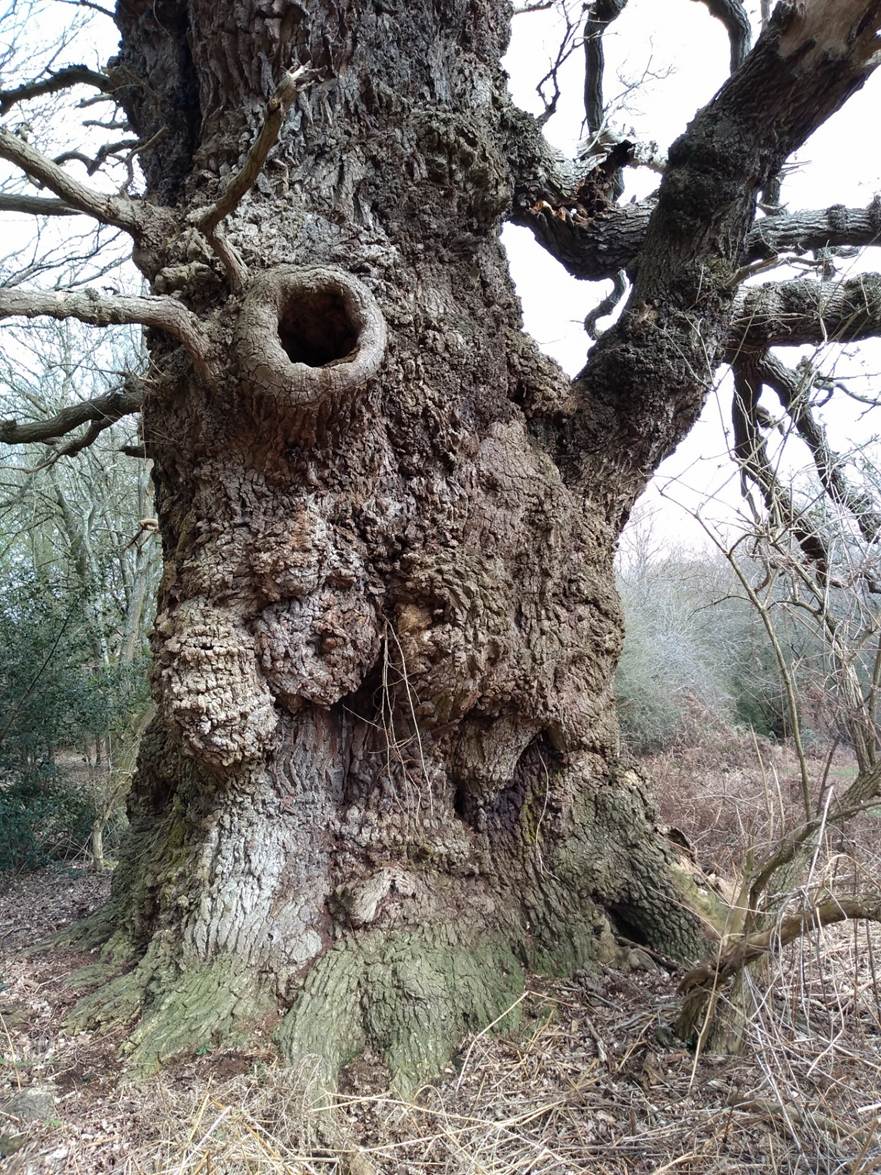
Said to symbolize the independent spirit of the Great Plains, the burr oak – or Quercus macrocarpa - is also well known as a tall solitary tree that iconically stands alone in the open prairies of the Midwest. Rather than by chemical deterrence, the burr oak’s solitude is a result of its rugged resilience and ability to survive in a harsh habitat that is inhospitable for many other trees. Its thick and deeply furrowed corky bark makes this tree exceptionally burn tolerant and able to withstand the intermittent wildfires that naturally occur in its native prairie habitat.
Burr oaks are the towering giants of the open grasslands in the American heartland. Some individual trees have reached enormous canopy heights and widths, immensely spanning over 100 feet in either direction with massive trunk diameters measuring up to ten feet wide. Having lived for hundreds of years, burr oaks are well known for their gargantuan size, contorted branches, craggy bark, bulging burls, and gaping cavities that serve as battle scars bearing witness to this tree’s long and storied tale of survivorship.
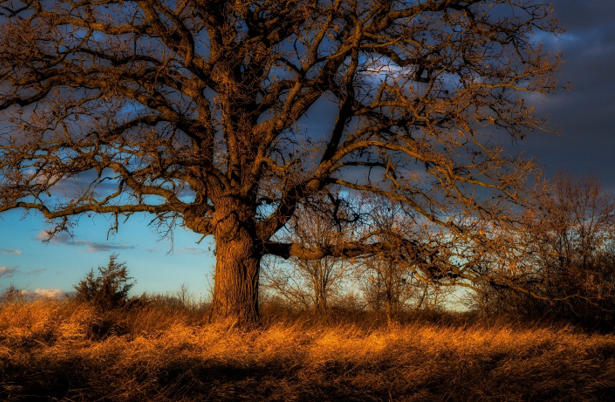
A true spirit of the Midwestern pioneers, the towering burr oak spreads its immense branches to guard over the vast expanses of the American prairies.
The mystery and wonder of our native trees
When you think about it, the mystery, spookiness, and wonder of the autumn season just wouldn’t be the same – and not nearly as much fun - without the dramatic stage set by our native trees in our backyards and natural areas. America’s trees, with their unique adaptations and storied histories, have become inextricably woven into the folklore and landscape of the regions they call home. Whether through their eerie shapes, unusual defenses, or their uncanny ability to inspire local legends, each tree species adds its own sense of mystery and intrigue to the American outdoors – reminding us that the natural world can be just as haunting as any ghost story.

